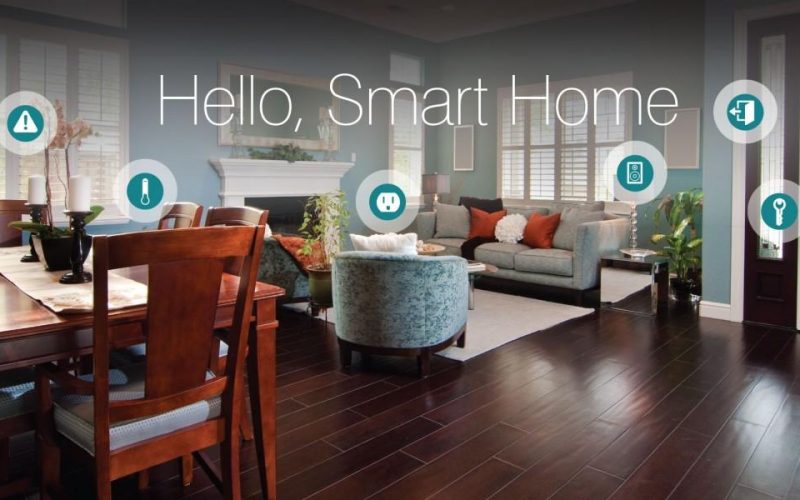Introduction
Technology has transformed how we live, and smart home devices have made daily tasks more convenient and efficient. From voice-controlled assistants to security cameras, smart gadgets improve home automation, making life easier and more secure. Whether you want to control your lighting, secure your home, or enjoy seamless entertainment, there’s a smart home device for you.
In this guide, we explore the best smart home devices that offer a connected lifestyle, helping you choose the right tech for your needs.
What Are Smart Home Devices?

Smart home devices are internet-connected gadgets that automate and improve everyday home functions. These devices can be controlled remotely using smartphones, voice commands, or home automation systems, making life more convenient and efficient. Common smart home devices include smart speakers, security systems, smart lighting, thermostats, and kitchen appliances—all designed to enhance comfort, security, and energy efficiency with just a tap or a voice command.
Essential Smart Home Devices for Every Home
1. Smart Speakers and Voice Assistants

Smart speakers with built-in voice assistants have become essential in many homes. They allow hands-free control over music, weather updates, and smart home automation. Popular options include:
- Amazon Echo (Alexa): Integrates with many smart home devices and offers great voice control features.
- Google Nest Audio: Works well with Google services, providing seamless connectivity.
- Apple HomePod Mini: Ideal for Apple users, offering integration with HomeKit.
2. Smart Thermostats for Energy Efficiency
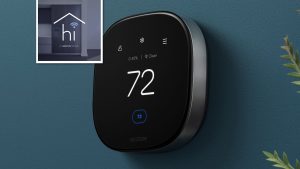
A smart thermostat optimizes temperature settings for energy efficiency, saving money on electricity bills. Some top models include:
- Nest Learning Thermostat: Uses AI to learn your habits and adjust settings accordingly.
- Ecobee SmartThermostat: Features a built-in voice assistant and remote sensors.
- Honeywell Home T9: Provides room-specific temperature control for better comfort.
3. Smart Lighting for a Custom Ambience

Smart lighting allows users to control brightness and color through apps or voice assistants. The best options include:
- Philips Hue Smart Bulbs: Offer customizable colors and dimming features.
- LIFX Smart Bulbs: Require no hub and provide vibrant lighting effects.
- Wyze Bulb: Affordable and offers great app control.
4. Smart Security Systems for Home Safety
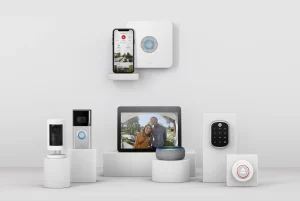
A smart security system ensures home safety through real-time alerts and remote monitoring. The top choices are:
- Ring Alarm System: Comes with motion sensors, cameras, and smart doorbells.
- Arlo Pro 4: Provides wireless security cameras with high-definition recording.
- SimpliSafe Home Security: Offers customizable alarm settings with professional monitoring.
5. Smart Door Locks for Keyless Entry
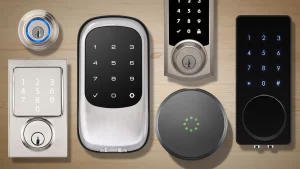
With a smart lock, you can lock and unlock doors remotely. Popular options include:
- August Wi-Fi Smart Lock: Allows remote access and integrates with Alexa and Google Assistant.
- Schlage Encode: A built-in Wi-Fi lock offering security without a hub.
- Yale Assure Lock SL: Features a touchscreen keypad for keyless access.
6. Smart Kitchen Appliances for Convenience

Smart appliances make cooking and food storage more efficient. The best options include:
- Instant Pot Smart Wi-Fi: Lets users control cooking settings from their phones.
- Samsung Family Hub Refrigerator: Features a touchscreen and voice assistant.
- Anova Precision Cooker: A smart sous-vide machine for perfect cooking results.
7. Smart Plugs for Easy Automation
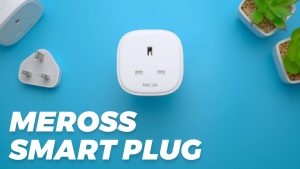
Smart plugs convert regular Appliances Into Smart Devices, allowing remote control and automation. Some excellent choices are:
- TP-Link Kasa Smart Plug: Works with Alexa and Google Assistant.
- Wemo Mini Smart Plug: Provides energy monitoring and scheduling features.
- Amazon Smart Plug: Simplifies automation within Alexa’s ecosystem.
8. Smart Home Hubs for Centralized Control
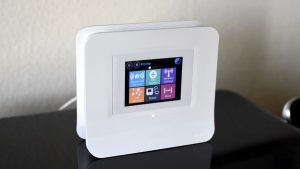
A smart home hub connects and automates multiple devices for seamless operation. The best hubs include:
- Amazon Echo Show: Works as a display, speaker, and smart hub.
- Samsung SmartThings Hub: Connects various smart devices across brands.
- Google Nest Hub: Offers voice and touch control for connected gadgets.
9. Smart Entertainment Systems for a Connected Experience

Enhance your entertainment with smart TVs and streaming devices:
- LG OLED Smart TV: Provides voice assistant compatibility and AI features.
- Apple TV 4K: Ideal for Apple users with seamless integration.
- Roku Ultra: Supports 4K streaming with a user-friendly interface.
10. Smart Cleaning Devices for Effortless Maintenance

Automate cleaning with robot vacuums and mops. Some popular choices are:
- iRobot Roomba i7+: Self-emptying vacuum with smart mapping.
- Ecovacs Deebot N8 Pro+: Vacuum and mop combo with laser navigation.
- Shark IQ Robot: Offers strong suction and self-cleaning brushes.
Benefits of Smart Home Devices
| Benefit | Description |
|---|---|
| Convenience | Control devices remotely with your phone or voice. |
| Security | Monitor your home with cameras and smart locks. |
| Energy Efficiency | Reduce power usage with automated thermostats and lights. |
| Entertainment | Enjoy high-quality audio and video streaming. |
| Time-Saving | Automate tasks like cleaning, cooking, and security. |
How to Choose the Best Smart Home Devices

1. Identify Your Needs
- Before purchasing smart home devices, determine what aspects of your Home you Want to Automate—security, lighting, entertainment, or general convenience.
- If security is a priority, consider smart locks, video doorbells, and motion-activated cameras for enhanced protection.
- For convenience, smart thermostats, robotic vacuums, and automated appliances can simplify daily tasks.
- If entertainment is your focus, look for smart speakers, streaming devices, and multi-room audio systems to create a seamless experience.
- Identifying your needs ensures you invest in the right technology without unnecessary purchases.
2. Compatibility with Your Ecosystem
- Ensure the device is compatible with your existing smart home system, such as Amazon Alexa, Google Assistant, or Apple HomeKit.
- Choosing devices that work within your ecosystem allows for seamless integration and voice control without compatibility issues.
- Check whether the device requires a hub or can function independently with Wi-Fi or Bluetooth.
- Some brands work better together—if you have multiple smart devices, ensure they can communicate efficiently within the same ecosystem.
- Compatibility ensures a smooth user experience, allowing you to control multiple devices with ease.
3. Budget Consideration
- Smart home devices range from budget-friendly to high-end models, so set a budget based on your priorities.
- Avoid overspending on unnecessary features—focus on core functionalities that meet your needs.
- Compare different brands and models to find cost-effective options that provide reliability and performance.
- Look for bundled deals or starter kits to save money if you plan on purchasing multiple devices.
- A well-planned budget ensures you get quality smart home solutions without exceeding your financial limits.
4. Read Reviews and Comparisons
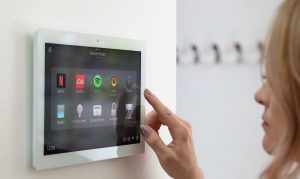
- Before making a purchase, check customer reviews and expert comparisons to evaluate a device’s reliability and usability.
- Look for feedback on ease of installation, app functionality, and long-term durability.
- Pay attention to common complaints, such as connectivity issues, lagging performance, or security concerns.
- Watching video reviews or reading side-by-side comparisons can help you make an informed decision.
- Well-researched purchases prevent buyer’s remorse and ensure you invest in the best option.
5. Prioritize Security Features
- Since smart devices connect to the internet, data security is crucial to prevent hacking or breaches.
- Choose devices with end-to-end encryption, secure Wi-Fi protocols, and two-factor authentication for added protection.
- Avoid products with weak security histories and ensure regular firmware updates are provided by the manufacturer.
- Set strong passwords and enable multi-layer security features to protect your personal data.
- Prioritizing security ensures your smart home remains safe, private, and protected from cyber threats.
Conclusion
Smart home devices have revolutionized modern living by offering convenience, security, and efficiency at our fingertips. From controlling lighting and adjusting room temperatures to monitoring home security and automating daily tasks, these devices create a more connected and effortless lifestyle. Whether you want to enhance comfort, improve safety, or increase energy efficiency, smart home technology provides endless possibilities tailored to your needs.
One of the biggest advantages of smart home devices is convenience. With just a voice command or a tap on your smartphone, you can control multiple aspects of your home. Smart lighting allows you to adjust brightness and color settings to match your mood, while smart thermostats optimize energy usage by learning your schedule and adjusting temperatures accordingly. Automated appliances, such as smart coffee makers or robotic vacuums, simplify daily tasks, freeing up time for more important things.
Home security has also reached new heights with smart devices. Motion-activated cameras, video doorbells, and smart locks provide real-time monitoring, allowing homeowners to check on their property anytime, anywhere. These devices send instant alerts in case of unusual activity, enhancing home safety and giving homeowners peace of mind.






